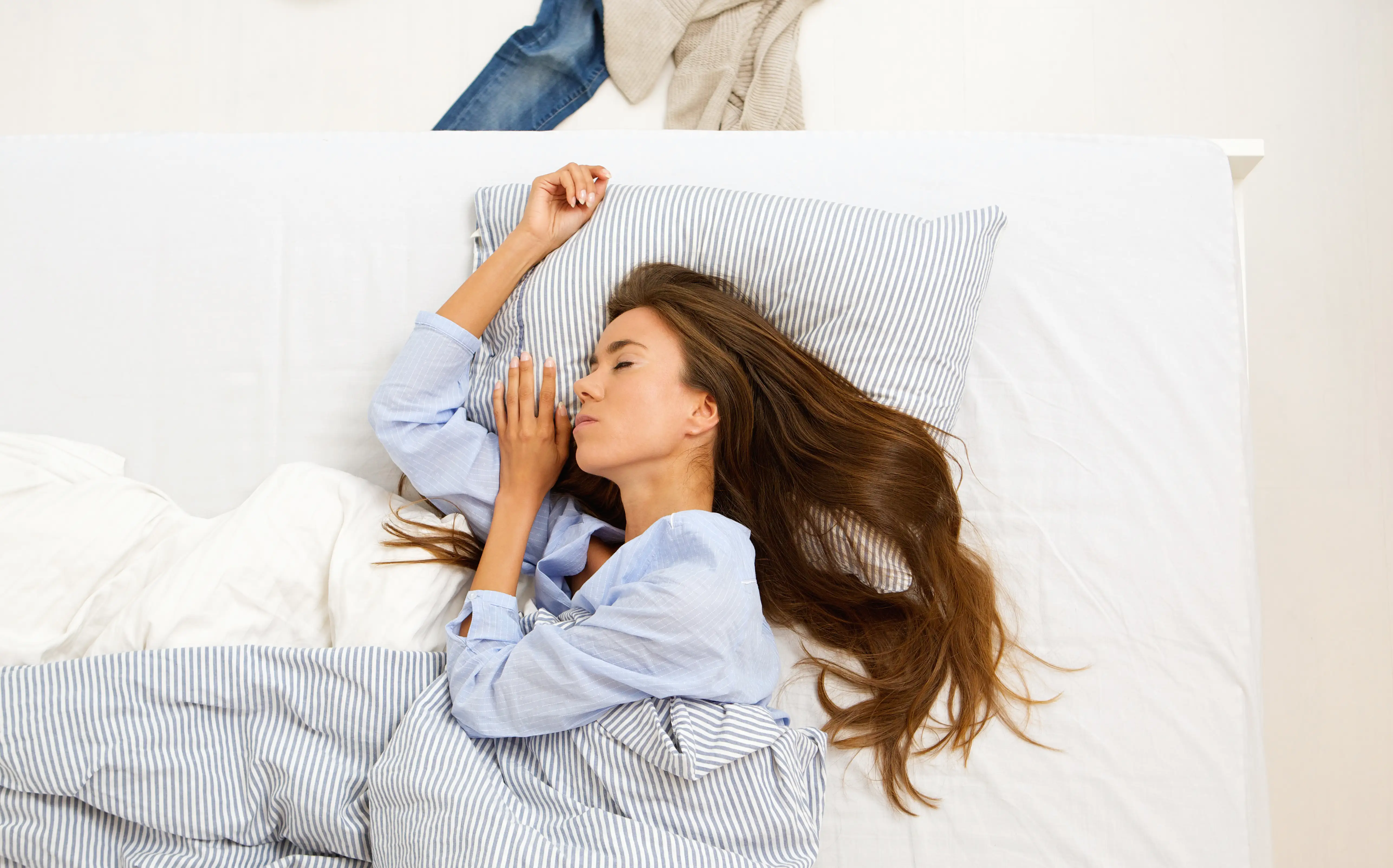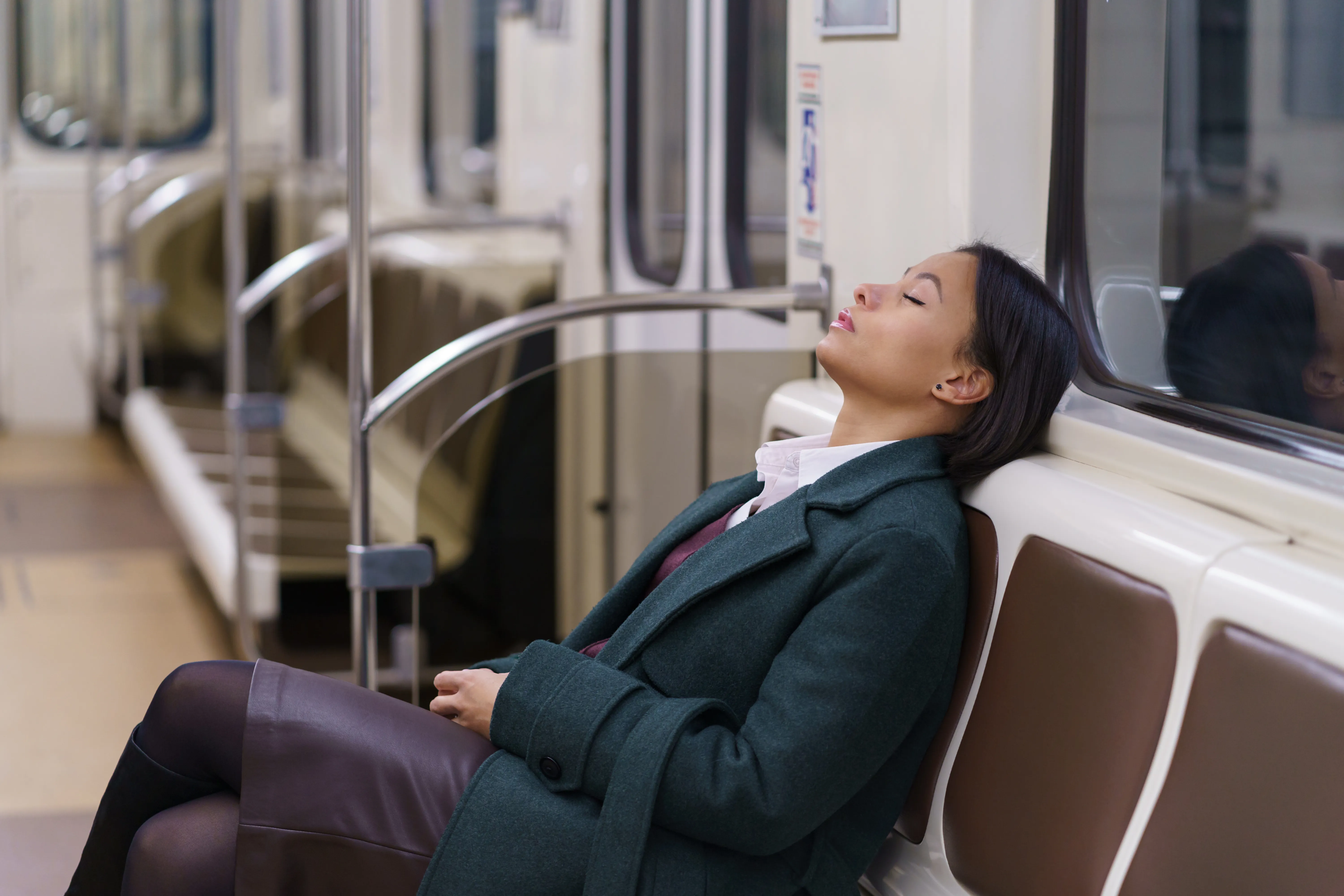Sleep apnea is a common yet disruptive condition that affects breathing during sleep. While medical devices like CPAP machines are often the go-to treatment, many people search for simpler ways to ease their symptoms.
One frequently suggested method is adjusting sleep position, especially by sleeping in an upright or elevated posture. In this article, we explore the science behind upright sleeping, who it may benefit, and whether it offers a practical way to ease sleep apnea symptoms.
What Is Sleep Apnea?
Sleep apnea is a disorder where breathing repeatedly stops and starts during sleep, leading to fragmented rest and potential long-term health risks.
The most common type is obstructive sleep apnea, which happens when the muscles in the throat relax and block the airway.
Central sleep apnea, though less common, occurs when the brain fails to send proper signals to the muscles that control breathing. Both types can cause loud snoring, gasping during sleep, morning headaches, difficulty concentrating, and persistent tiredness throughout the day.
How Your Sleeping Position Affects Sleep Apnea

The position you sleep in can have a major impact on how often your airway becomes blocked during the night. When lying flat on your back, gravity can cause the tongue and surrounding tissues to fall backward, narrowing or fully blocking the airway. This is why back sleeping often worsens symptoms of obstructive sleep apnea.
On the other hand, sleeping on your side typically helps keep the airway more open. Some people also find relief by sleeping in a more upright or reclined position, which may reduce pressure on the airway and improve breathing during sleep.
This is also why upright sleeping is often recommended for people with orthopnea, as both conditions involve breathing difficulty triggered by lying flat.
Who Might Benefit Most from Upright Sleeping
Sleeping in an elevated or upright position isn’t just about comfort; it can offer meaningful relief for people with certain health conditions. Upright sleeping may help reduce airway collapse, improve breathing, and ease other symptoms that tend to worsen when lying flat. Here are the groups who may benefit most:
- People Who Struggle with Obstructive Sleep Apnea: For those living with obstructive sleep apnea (OSA), especially when symptoms worsen while lying on the back, sleeping in an upright position can help minimize airway blockages and improve nighttime breathing.
- Those Affected by Gastroesophageal Reflux Disease: Individuals dealing with gastroesophageal reflux disease (GERD) may find that upright sleeping reduces the backflow of stomach acid, easing discomfort, enhancing sleep quality, and decreasing nighttime awakenings.
- Individuals with Persistent Nasal Congestion: People who experience nasal congestion due to allergies or sinus issues might benefit from sleeping upright, as it encourages better airflow through the nasal passages and can reduce nighttime breathing difficulties.
- Adults with Obesity or Excess Fat Around the Neck: Elevating the upper body during sleep can ease pressure on the airway, making it easier to breathe and reducing the risk of apneic episodes, especially in individuals with obesity or excess neck fat, which are both risk factors for sleep apnea.
- People Experiencing Orthopnea or Related Symptoms: For those with orthopnea, a condition where lying flat causes shortness of breath, sleeping upright is often necessary. Since orthopnea can occur alongside sleep apnea, elevating the body may help alleviate symptoms of both conditions simultaneously.
Does Sleeping Sitting Up Help Sleep Apnea?

Sleeping in a seated or elevated position can provide noticeable relief for people with obstructive sleep apnea, and it's a well-established strategy for managing orthopnea as well, where lying flat can provoke intense breathlessness. By modifying your sleep posture, you may reduce how often your airway collapses during the night.
While this approach doesn’t work for everyone, many find that even a slight incline makes a difference in breathing ease and sleep quality, especially when paired with other lifestyle changes or medical treatments.
How Sleeping Upright Can Improve Airway Patency
One of the biggest advantages of upright sleeping is how it affects the structure of the airway. When lying flat, gravity can cause the tongue and surrounding tissues to fall back into the throat, narrowing the airway. An elevated position minimizes this collapse, helping you breathe more freely throughout the night.
- Prevents Tongue and Soft Tissue Collapse: Sitting upright helps counteract gravity’s effect on the tongue and soft palate, reducing the chances of airway obstruction during sleep.
- Reduces Pressure on the Lungs to Improve Airflow: Elevating the upper body can ease pressure on the lungs and diaphragm, allowing for smoother, more efficient breathing throughout the night.
Effects on Breathing and Oxygen Levels
People with sleep apnea often experience dips in blood oxygen due to repeated breathing interruptions. Sleeping upright can reduce the frequency and severity of these apneas, which helps stabilize oxygen levels and improve overall sleep quality.
- Increases Oxygen Intake During Sleep: With a more open airway and less restriction, the body can take in more oxygen, supporting better overall blood oxygen levels.
- Reduces Frequency of Apnea Episodes: A less collapsed airway means fewer breathing interruptions, which can lead to more restful and continuous sleep.
Benefits for People With Mild to Moderate Sleep Apnea
This sleeping method is most effective for people with mild or position-related sleep apnea. It doesn’t involve machines or prescriptions, making it a convenient option for those looking to reduce symptoms naturally or as a supplement to other treatments.
- Easier to Adopt Than Some Medical Treatments: For those hesitant to use a CPAP machine or other interventions, sleeping upright offers a non-invasive, accessible alternative.
- Improves Sleep Quality and Reduces Symptoms Temporarily: While not a permanent fix, upright sleeping can relieve symptoms on nights when apnea feels more intense, such as after drinking alcohol or during nasal congestion.
Limitations and Considerations
Although sleeping upright can be helpful, it’s not a cure-all. People with severe sleep apnea should still consult a healthcare provider for proper diagnosis and treatment. It’s also important to find a comfortable setup that supports the neck and back.
- Not a Cure for Severe Sleep Apnea: People with moderate to severe sleep apnea still need medical treatment, as upright sleeping alone may not provide sufficient relief.
- May Cause Discomfort or Neck and Back Pain: Maintaining a semi-upright position can strain the neck or back if not properly supported, especially when sleeping in chairs or with too many pillows.
Alternative Sleep Positions for Sleep Apnea
While sleeping upright can help, it's not the only position that may ease sleep apnea symptoms. Several alternative sleep strategies are commonly recommended, especially for people with positional obstructive sleep apnea, a type where symptoms worsen in certain sleeping postures. Exploring these alternatives can help you find the most comfortable and effective way to breathe better at night.
Sleeping on Your Side
Side sleeping is often considered one of the best positions for reducing sleep apnea episodes. It helps keep the airway open by preventing the tongue and soft palate from falling back into the throat.
- Reduces Gravity-Induced Airway Collapse: Side sleeping lessens the effect of gravity on throat tissues, reducing obstruction.
- May Lower Snoring and Apnea Events: Many people experience fewer breathing interruptions and less snoring when sleeping on their side.
- Left Side May Be More Effective: The left side is sometimes preferred for improving circulation and reducing acid reflux, which can also impact sleep quality.
Elevating the Head of the Bed
Raising the head of your mattress, even slightly, can have similar effects to upright sleeping, without the need to sleep in a sitting position.
- Improves Breathing by Tilting the Airway Forward: Elevation helps prevent the airway from collapsing, especially in supine sleepers.
- Helps Reduce Acid Reflux at Night: This benefit is beneficial for people with both GERD and sleep apnea.
- Can Be Done Easily at Home: Bed wedges, foam risers, or adjustable bed frames make this a convenient option.
Positional Therapy Devices
For people whose sleep apnea only occurs when lying on their back, positional therapy devices can help keep them in a side-sleeping position throughout the night.
- Wearable Devices Encourage Side Sleeping: These tools vibrate or provide pressure feedback when you roll onto your back, helping promote better sleep posture, especially useful for people who struggle with back-sleeping while using a CPAP machine.
- Non-Invasive and Drug-Free: They offer a gentle way to retrain your sleeping habits without medications or machinery.
- Work Best for Positional OSA: These devices are especially helpful for people whose symptoms disappear or improve when sleeping on their side.
Tips for Sleeping Comfortably Sitting Up
Sleeping upright can offer real benefits for people with sleep apnea, but only if done comfortably. Without proper support, it can lead to body aches, poor rest, or disrupted sleep. The following approaches can help you maintain comfort while maximizing the effectiveness of this sleeping position.
Using Recliner Chairs
Recliner chairs are one of the easiest ways to sleep upright. They provide built-in back support and allow you to adjust the angle of your body to a comfortable incline.
Many people find recliners especially helpful during times when symptoms worsen, such as during illness or allergy flare-ups. Their supportive design reduces the strain on the lower back and makes upright sleep more sustainable, especially for short-term use.
Adjustable Beds
Adjustable beds are a great solution for those who want to sleep at an incline without leaving their bedroom setup. These beds allow you to raise the upper portion of the mattress, keeping your head and torso elevated at a stable angle throughout the night.
Unlike using stacks of pillows, an adjustable bed gives you consistent support and helps maintain proper alignment. It can also be combined with other treatments, like CPAP therapy, to enhance breathing comfort.
Wedge Pillows
Wedge pillows are a simple and cost-effective tool for upright sleeping. Designed in a triangular shape, they lift your upper body at a gentle incline and help reduce airway obstruction without causing discomfort.
Because they're firm and angled, they prevent the kind of slouching or sliding that happens with regular pillows. Wedge pillows are also portable and can be used on nearly any bed, making them ideal for people looking to try upright sleeping without major changes.
Managing Back and Neck Pain
To make upright sleeping truly restful, you’ll need to minimize strain on your spine and neck. Supporting the lower back with a small cushion or lumbar roll can ease tension in the lower spine.
At the same time, using a neck pillow or ergonomic headrest will help maintain your head’s natural position without causing stiffness. If you sleep this way often, it’s also helpful to do gentle stretches during the day to release any built-up tightness from sleeping in a seated posture.
When to See a Doctor
If you suspect you have sleep apnea or notice symptoms like loud snoring, frequent gasping or choking during sleep, persistent daytime fatigue, or difficulty concentrating, it’s important to consult a healthcare professional. Sleeping sitting up may provide some relief, but it’s not a substitute for proper diagnosis and treatment.
A doctor can perform sleep studies to determine the severity of your condition and recommend the best course of action, which may include CPAP therapy, oral appliances, lifestyle changes, or surgery.
Seeking medical advice early helps prevent complications such as high blood pressure, heart disease, and impaired cognitive function.
FAQs
Is it safe to sleep sitting up every night?
Sleeping sitting up is generally safe for most people and can reduce sleep apnea symptoms. However, it may cause neck or back discomfort if proper support isn’t used. If you experience pain or poor sleep quality, consult a healthcare provider for personalized advice.
Is Sleeping Upright Better Than Using CPAP?
Sleeping upright can help reduce mild sleep apnea symptoms but is not a replacement for CPAP therapy, especially in moderate to severe cases. CPAP remains the most effective treatment for preventing airway collapse and improving sleep quality long-term.
How Long Should I Sleep Sitting Up to See Benefits?
Many people notice symptom improvement immediately or within a few nights of sleeping upright. However, consistent use over weeks may be needed to experience meaningful and sustained relief.
What’s the ideal incline angle to reduce apnea symptoms?
An incline of about 30 to 45 degrees is often recommended to reduce airway collapse. This angle helps keep the upper airway open without causing discomfort or strain during sleep.
Conclusion
Sleeping sitting up can help reduce symptoms of mild to moderate sleep apnea by keeping the airway more open. While it’s not a cure or substitute for treatments like CPAP, it’s an easy, non-invasive way to improve breathing during sleep. Comfort and support are important, and if symptoms persist, seeing a doctor is essential for proper care.
Jessica H.
Jessica is a reviewer, writer, and sleep enthusiast at Sleepiverse. Jessica graduated with her master's degree in Nursing research and education. She is a registered nurse and currently works in the Intensive Care Unit. Since becoming a nurse, Jessica has worked the night shift, which means a disrupted sleep schedule. Knowing she needed to function at her best while caring for patients at night, she spent a lot of time researching how to sleep well with a difficult schedule.


